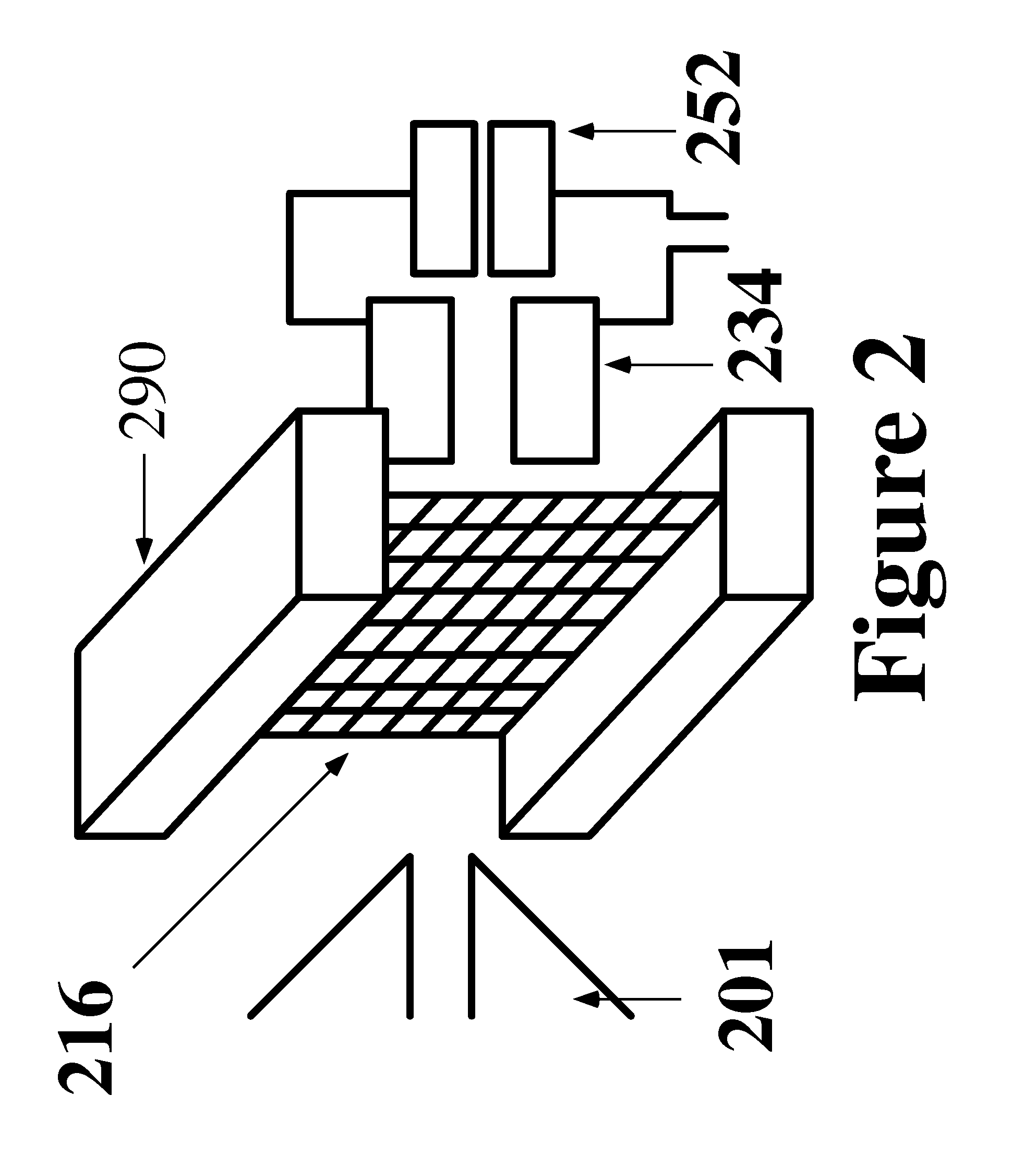Apparatus and method for thermal assisted desorption ionization systems
a technology of ionization system and apparatus, which is applied in the direction of instruments, particle separator tube details, separation processes, etc., can solve the problems of inefficient transfer of heat to the sample by the carrier gas, and the time required to heat up the carrier gas to a sufficient temperature to enable the desorption of some analytes, so as to improve the resolution of the spectrometer, improve the transfer of ions, and improve the analysis of two or more samples
- Summary
- Abstract
- Description
- Claims
- Application Information
AI Technical Summary
Benefits of technology
Problems solved by technology
Method used
Image
Examples
Embodiment Construction
Definitions
[0040]The transitional term “comprising” is synonymous with “including,”“containing,” or “characterized by,” is inclusive or open-ended and does not exclude additional, unrecited elements or method steps.
[0041]The transitional phrase “consisting of” excludes any element, step, or ingredient not specified in the claim, but does not exclude additional components or steps that are unrelated to the invention such as impurities ordinarily associated with a composition.
[0042]The transitional phrase “consisting essentially of” limits the scope of a claim to the specified materials or steps and those that do not materially affect the basic and novel characteristic(s) of the claimed invention.
[0043]A vacuum of atmospheric pressure is 1 atmosphere=760 torr. Generally, ‘approximately’ in this pressure range encompasses a range of pressures from below 101 atmosphere=7.6×103 torr to 10−1 atmosphere=7.6×101 torr. A vacuum of below 10−3 torr would constitute a high vacuum. Generally, ‘a...
PUM
 Login to View More
Login to View More Abstract
Description
Claims
Application Information
 Login to View More
Login to View More - R&D
- Intellectual Property
- Life Sciences
- Materials
- Tech Scout
- Unparalleled Data Quality
- Higher Quality Content
- 60% Fewer Hallucinations
Browse by: Latest US Patents, China's latest patents, Technical Efficacy Thesaurus, Application Domain, Technology Topic, Popular Technical Reports.
© 2025 PatSnap. All rights reserved.Legal|Privacy policy|Modern Slavery Act Transparency Statement|Sitemap|About US| Contact US: help@patsnap.com



